The tremolo effect has been around for a long time, and according to the founder of JHS pedals, it was actually one of, if not the very first stand-alone pedal effects when it came out in the 1940s.
It makes sense that it would be the tremolo effect because it’s just a circuit that’s turning the volume up and down really fast. Think of it like turning the volume up and down on your car stereo. But where should you put it in your signal chain?
Typically, guitarists place the tremolo effect towards the end of their signal chain alongside other modulation pedals and after drive/distortion. This is because the tremolo will modulate the entire signal. However, some prefer putting it at the start with impedance-sensitive pedals like fuzz.
A lot of this is up to personal taste. Many guitar gear experts and authority figures will say the same thing. Ultimately, I feel like tremolo though is one of those effects where it can go anywhere. It’s really up to personal taste, however, I think it’s worth discussing a few possibilities, and I’ll also tell you my favourite.
Tremolo, Modulation, and Your Signal Chain
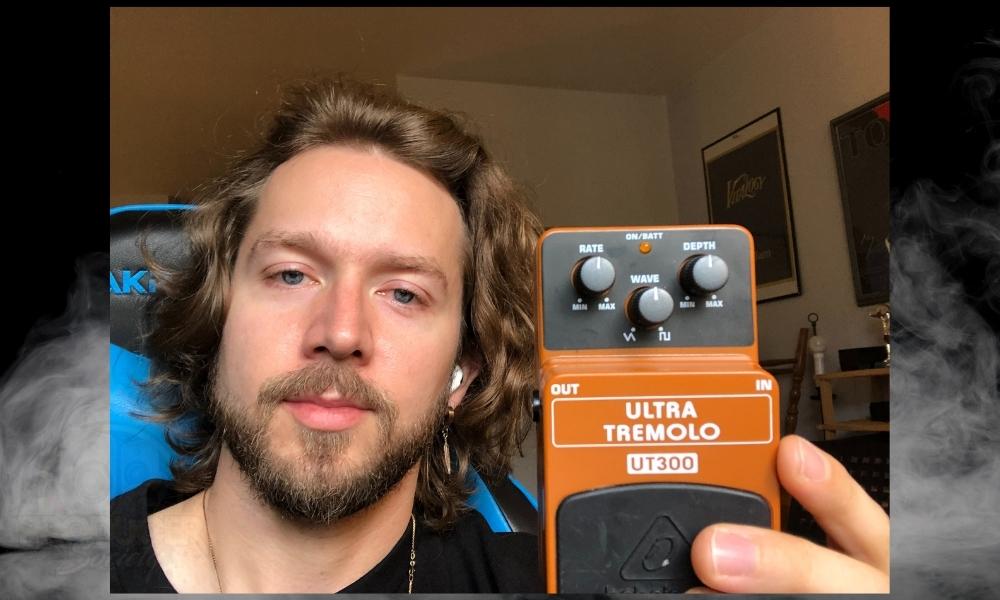
As I said a moment ago and in my tremolo pedal guide, the guy from JHS Pedals says in his video that tremolo pedals are basically a modulation effect, which is something I never actually considered.
I’ve heard them mentioned along with chorus, flangers, and phasers, but this perspective or understanding of tremolo never really solidified itself into my mind as it has with other pedals.
I’ve been a Rage Against the Machine fan for years, so I’ve always looked up to Tom Morello’s use of tremolo as an example, and he actually treats it a little differently.
Truthfully, I’ve copied his placement and I consider it to be the best but maybe I’m just biased due to my love for the band.
Anyway, without further ado, let’s talk a bit about the most common placements of tremolo pedals. We’ll start with Tom’s placement.
1) Close to the Guitar (Nearly First And In Between Wah and Pitch FX)
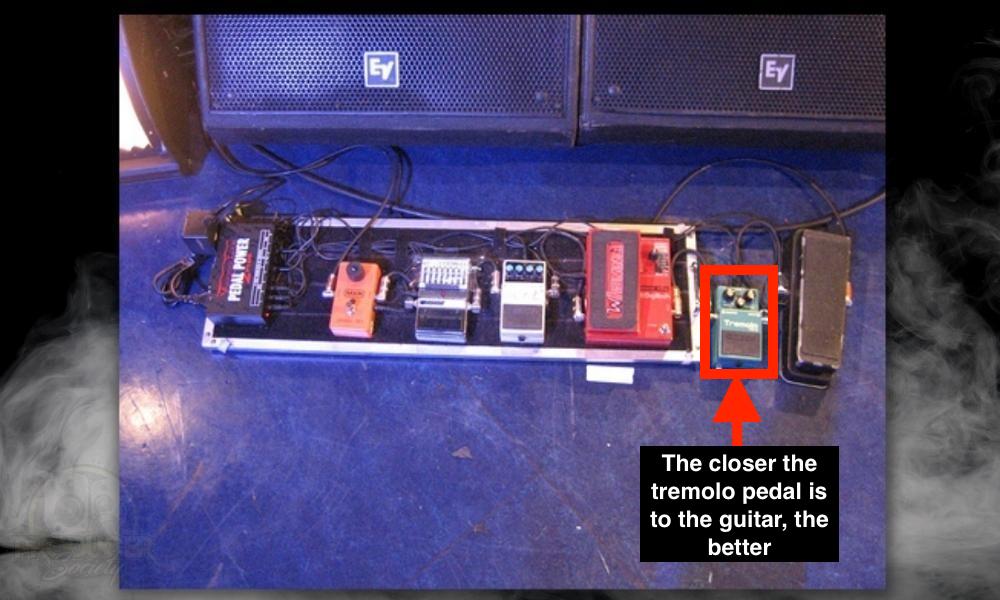
As you can see from the image, the tremolo pedal, the BOSS TR-2, is almost right at the start of the signal chain just after the wah pedal and just before the DigiTech Whammy pedal.
I find this to be the best way to put tremolo in your chain because it ensures the tremolo pedal is going to work as effectively as it possibly can. The result is a very strong tremolo effect that can manipulate the volume of your signal a lot.
Because I mostly use tremolo to play classic tunes like “Like A Stone” which I showed you how to do in this article, I’ll typically put the tremolo pedal in the volume section.
The way I look at it, the tremolo pedal isn’t really a modulation pedal which should be put alongside chorus, flangers, and phasers. It’s a volume pedal and should be placed near volume, wah, and pitch FX.
All “modulation” means is that the audio signal is moving. But unlike the other modulation effects which affect pitch and time, tremolo changes the volume.
Tremolo is on its own though in terms of only affecting pitch. This is why I refer to it as a totally different effect. But hey, this is just how I look at it. People a lot smarter and more experienced than me do think of it as a modulation pedal.
![My Signal Chain (FX Loop) - Where Should The Tremolo Pedal Go In Your Signal Chain [Tremolo]](https://travelingguitarist.com/wp-content/uploads/2022/11/My-Signal-Chain-FX-Loop-Where-Should-The-Tremolo-Pedal-Go-In-Your-Signal-Chain-Tremolo.jpg)
Like most things related to guitar, where you put pedals in your signal chain is largely up for debate, and people will argue about these things for weeks.
![Tremolo - Where Should A Tremolo Pedal Go In The Signal Chain? [EASY]](https://travelingguitarist.com/wp-content/uploads/2022/11/With-Volume-and-Pitch-FX-Where-Should-The-Tremolo-Pedal-Go-In-Your-Signal-Chain-copy.jpg)
2) In the FX Loop [Before Delay and Reverb]
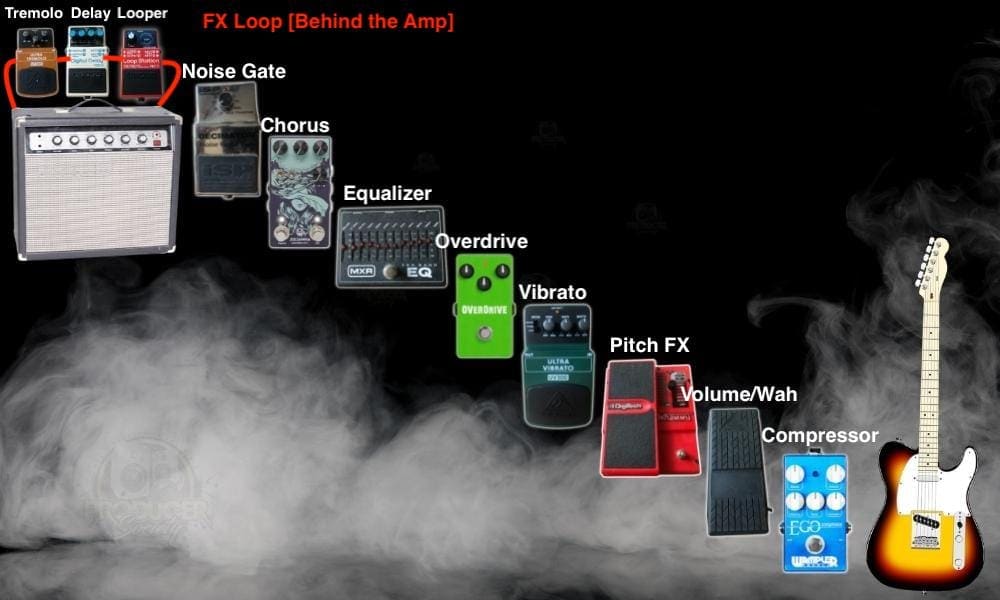
Another fairly popular way of setting up a tremolo pedal is to put it in the FX Loop along with other modulation and time-based effects.
Personally, I like to put the Looper and Delay back there, but the tremolo in the FX Loop is something I don’t do. Additionally, it’s important to note that you’ll want the tremolo to be first in the FX Loop chain.
Put the delay after the tremolo and then the looper pedal right after the delay. This will give you plenty of control over your time-based effects.

And, as I said in my looper guide, it’ll also give you the freedom to control the effects on your loops which is super important for me as someone who loves using the RC-5. But how do you actually set this up?
I remember when I first started messing around with the FX Loop, I found it a bit intimidating and I couldn’t really understand why the ports were called “send” and “return.” It’s really not hard.
![FX Loop - Where To Put The Looper Pedal In Your Signal Chain [SIMPLE]](https://travelingguitarist.com/wp-content/uploads/2022/04/FX-Loop-Arrows-Where-To-Put-The-Looper-Pedal-In-Your-Signal-Chain-SIMPLE.jpg)
In effect, you need two separate 1/4” instrument cables (also called guitar jacks), and you want to plug one into the output of your pedal and the other one into your input.
![Tremolo Pedal - Where Should A Tremolo Pedal Go In The Signal Chain? [EASY] - 1](https://travelingguitarist.com/wp-content/uploads/2022/11/Tremolo-Pedal-Where-Should-A-Tremolo-Pedal-Go-In-The-Signal-Chain-EASY.jpg)
And it’s pretty much as simple as that. If you think about it, it’s not terribly complicated and the names of the ports make sense.
You’re sending the signal behind the amp and then returning it. The image below kind of shows how this happens.
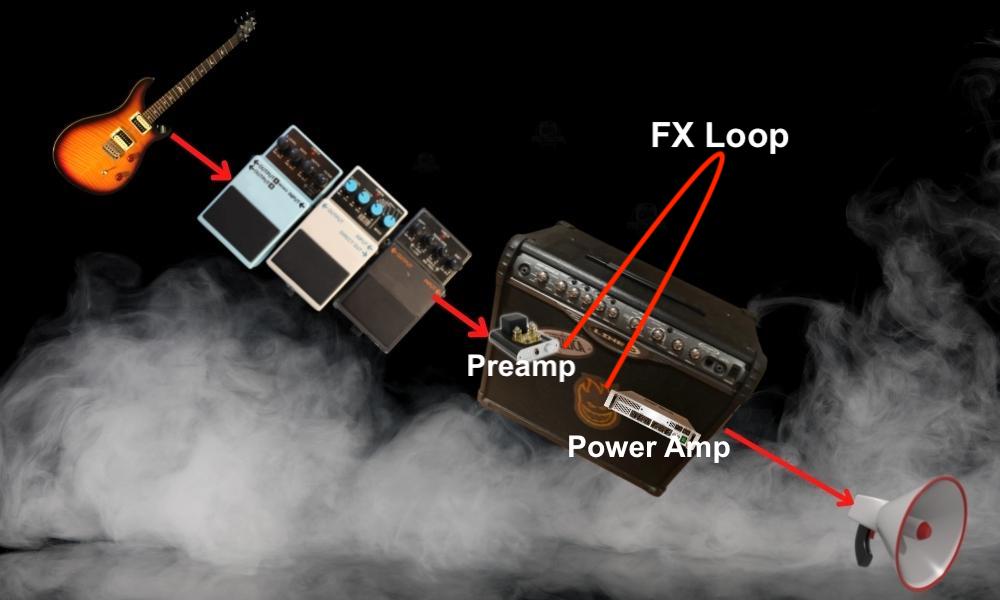
We could really dive into this topic but it takes more than a few words. If you’re interested, read more about how pre-amps and power amps work in relation to effects loops in this article.
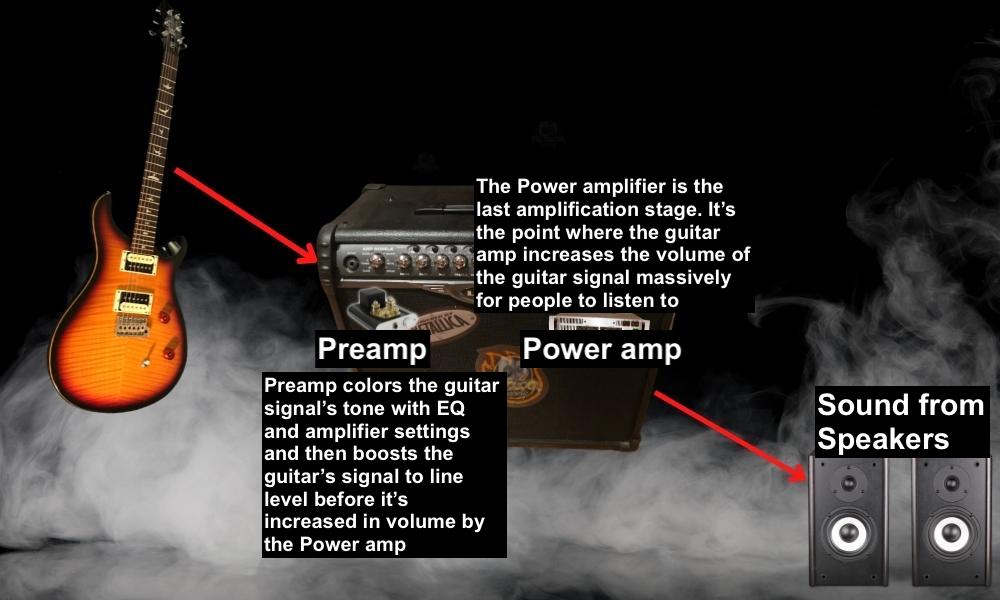
In effect, the power amplifier is the last point in the process of your guitar amplifier. It’s the part where it increases the volume of the signal and brings it up to a level where it’s ready to be pushed out as sound from your speakers.
The pre-amplifier is the stage where you actually EQ the guitar tone and give it all the sounds that are part of your amplifier’s characteristic sound. The FX Loop sits between these two stages.
Let’s talk about the last way to put a tremolo pedal in your signal chain, which is actually probably a lot more common than the ways I’ve mentioned thus far.
4) After Distortion/Overdrive And With Other Modulation Effects
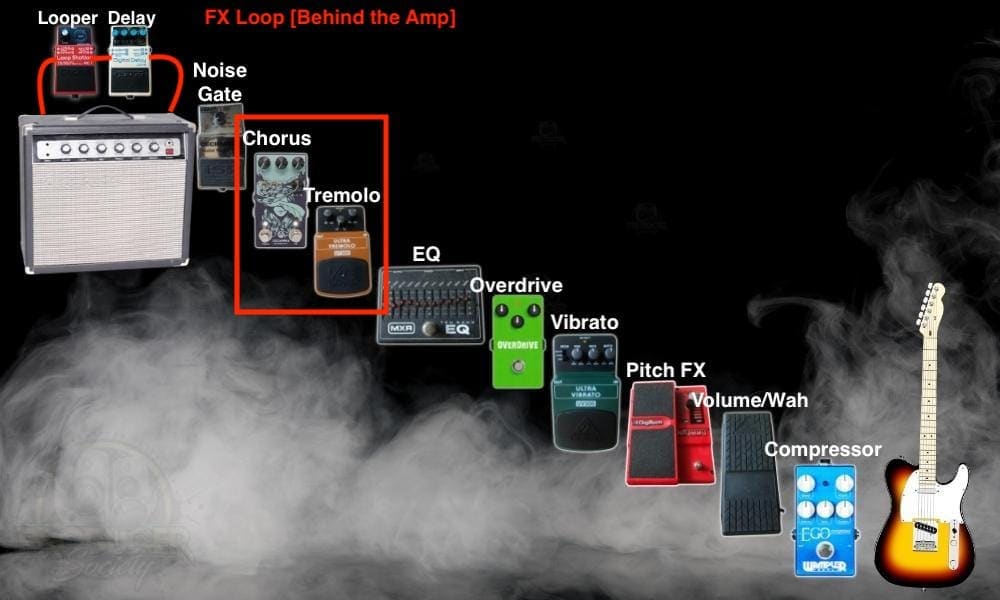
This is the way that most people will recommend putting tremolo pedals in your signal chain, including the aforementioned guy from JHS Pedals and the other dude from Vertex Effects.
These are both very informative channels by the way and are worth checking out. We’ve already explained it before, but for the sake of clarification, most people think of tremolo as a modulation effect.
Therefore, it’s placed alongside chorus, flangers, phasers, and sometimes with time-based effects. This can be either at the end of the chain or in the FX Loop at the back of the amplifier.
Other Articles You May Be Interested In
- What Are The Tremolo Settings for “Like A Stone?” [SIMPLE]
- What Are The Tremolo Settings for Pink Floyd’s “Money?”
- What’s the Tremolo Setting for Boulevard of Broken Dreams?
- What’s the Tremolo Setting for “Gimme Shelter?” [EASY]
Important Thing to Note About A Tremolo Pedal
1) Don’t Confuse Tremolo and Vibrato
I’ve explained this in a few articles now, but ultimately, Leo Fender made a mistake a long time ago when he confused tremolo for vibrato. As a result, some people call vibrato tremolo and tremolo vibrato, but they’re actually different.
Tremolo is a modulation in volume (cutting in and out, or going up and down in volume), whereas vibrato is a modulation in pitch. They are different things.


 Written By :
Written By :
